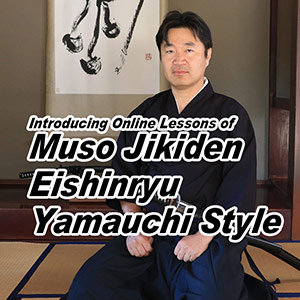It is the garden where you can feel and touch the history of Edo period. Not like the other garden or park where has many facility for play, Imperial Palace Outer Garden has no facilities. Mostly Pine trees garden and great buildings from Edo Castle. No BBQ or exercise are allowed (Jogging will be OK, but not with many people).
However, it is located in the center of Tokyo metropolitan. Many business people visit here for lunch or after work for relaxing.
Because it is located right next to the Imperial Palace, there are many police and royal guards.
Statue of Masashige Kusunoki (楠正成) : is placed at 1904 made by Koun Takamura (person) and Sadayuki Goto (Horse). This is one of the three major statue in Tokyo. Masashige Kusunoki is the Royal Sumurai who fight for the emperor against Kamakura Government.
Historic Building from Edo Castle
Sakurada-mon (桜田門) : is the one of the gate of Edo Castle. It was completed in 1620. It was very important gate for Edo Castle, so it has actually double gated structure to keep the enemies inside the gates and attack them from the main gate. 1860, Mr. Ii was assassinated here and it was the beginning of Meiji restoration.
On September 1, 1923, this gate was severely damaged by the Great Kanto Earthquake. The gate was later reconstructed to its former glory. Most of the old gates of Edo Castle belong to a type of gate called "Masugata-mon," meaning Square shaped gate. The characteristic of the Masugata-mon is that there is small square-shaped space inside the exterior walls and then followed by two more gates called, "Korai-mon" gate and "Yagura-mon" gate. In the olden days, these Masugata-mon gates were strategically positioned. The size of the square inside Sakurada-mon gate is 17m x 38m.
In 1961, Sakurada-mon Gate was designated as an Important Cultural Asset to Japan, because this is the largest of the remaining gates of the former Edo Castle, and its interior square is well preserved.
Nijubashi (二重橋) : which means the "Double Bridge" is one of th emost well-known bridges in Japan. If you are looking at the bridge from the front , the two separate bridges appear as a single two storied bridge. The correct name for bridge in foreground is "Stone Bridge of the Main Gate" and the bridge in the backround is called "Steel Bridge of the Main Gate." The welll-known "Nijubashi" usually indicates this "Steel Bridge of the Main Gate." The name "Nijubashi" derives from the fact that in the olden days, this Steel Bridge was made of wood and was further reinforced with wooden beams, thus creating a so-called double bridge. This is why people began to call the bridge the "Double Bridge." The present bridge was re-constructed in 1964.
Nijubashi bridge is only opened on special occaisons such as for official state guests and for holding formal ceremonies at the Imperial Palace. Also twice a year, people are allowed to enter from the Nijubashi Bridge to the East Palace (Totei) of the Imperial Palace. THe first occasions is one the 2nd of January, which is called "People's visit to the Palace for New Year Greetings" and the other occasion is on the 23rd of December, which is the Emperor's Official Birthday.
Sakashita-mon (坂下門) : is the entrance for Nishi-nomaru, currently the Imperial Palace). It has great moat and and rock walls. You can see great pine trees, garden and the gate at the same time. There was also assassination happened here for the Meiji Revolution, Sakashitamon no Hen.
Tatsumiyagura and Kikyo-mon (巽櫓, 桔梗門) : are located south part of Edo Castle. You can also see the Fujimi-yagura(富士見櫓) from this angle. Yagura is Keep Tower to protect the castle from the enemy. There were 19 Yagura originally in Edo Castle, but those three Yagura are exist now. They are now symbols of Edo Castle. Kikyo-mon was actually named also Sakuradamon. However, since they expand the Castle to the east and build new Sakurada-mon, people started calling Kikyo-mon because there is Kikyo symbol for former owner of Castle.
Oote-mon (大手門) : is the main gate of Edo Castle. The gate was built bay Masamune Date, one of the great warrior. So, it is well design to protect the Edo Castle. Current Gate was built at 1968. In front of the Ootemon was used be the down town of Edo. Recently, it is still the center of Tokyo Business district as Ootemachi.
Wadakura Park (和田倉噴水公園) : was reconstructed in 1995, based on the theme of "Continuity and New Development". This fountain park was refurbished to celebrate the occasion of the royal wedding of the Crown Prince and Princess. The original fountain park was construckted to commemorate the royal wedding of the present Emperor and Empress in 1961. THe center fountain has water jet of 8.5m, while the adjacent fountain has been constructed close to the existing fountains. This water fall is 5.5m high, and 30m wide.
Japanese Black Pine : There are approximately 2,000 Japanese Black Pine trees planed in the National Garden Plaza area. The inside of the Imperial Palace Garden consists mostly of dense woodland gardens, which are maintained in their natural condition. In contrast, this Garden area which is wide and of open design. The single plantation of Japanese Black Pines in this area creates a peaceful and solemn atmosphere. The Japanese Black Pines woodland is considered to be one of the finest views in the National Gardens.
Before Edo Castle was built, this area was an inlet of Tokyo Bay, and thousand of Japanese Black Pines grew naturally along the shores of this inlet and Tokyo Bay. The first Japanese Black Pines were planted in the Garden Plaza area in 1888.
Official Web site : http://www.env.go.jp/garden/kokyogaien/







